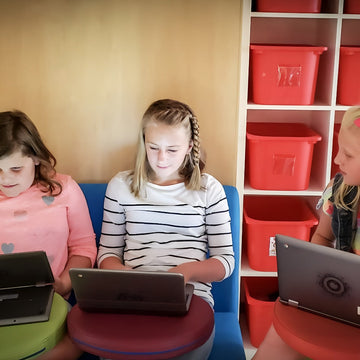Middle school is a time of major growth—academically, socially, and emotionally. Students are discovering who they are, how they learn best, and how to interact with the world around them. That’s why creating a flexible, student-centered classroom environment is essential for supporting their development.
In this blog post, we’ll explore how modern learning space solutions can transform middle school classrooms into hubs of creativity, collaboration, and deeper engagement.
Why Middle School Learning Environments Matter
Middle schoolers are unique learners. They’re transitioning from guided instruction to independent thinking, and they need classroom spaces that support this evolution. A well-designed classroom can improve student focus, promote interaction, and support a variety of learning styles—from group collaboration to quiet, focused study.
Flexible Furniture: Learning That Moves with Them
One-size-fits-all furniture doesn’t work in middle school. Students benefit from flexible seating options that adapt to different activities throughout the day.
Top solutions include:
-
Adjustable Desks: Perfect for both individual and group work
-
Comfortable Chairs: Help students stay focused and reduce restlessness
-
Mobile Furniture: Makes it easy to rearrange the classroom layout for different learning activities
Benefits:
✅ Supports collaboration
✅ Allows for movement and flexibility
✅ Accommodates diverse physical needs
Interactive Technology: Engage and Inspire
Technology is a vital tool in today’s classrooms—especially at the middle school level. Students are digital natives, and integrating tech into daily learning helps them connect with content on a deeper level.
Examples of classroom tech tools:
-
Interactive flat panels
-
Classroom audio systems
-
Digital whiteboards and document cameras
-
Charging stations and device storage
Benefits:
✅ Boosts engagement
✅ Encourages visual and hands-on learning
✅ Prepares students for tech-integrated futures
Designing for Collaboration and Organization
Middle school students thrive when classrooms are organized and intentional. Incorporating zones for group work, independent tasks, and teacher-led instruction creates structure and encourages independence.
Ideas to consider:
-
Group tables or pods for peer collaboration
-
Quiet corners for reading or reflection
-
Storage solutions that minimize clutter and maximize space
Pro Tip: Add writable surfaces or whiteboard walls to foster creativity and quick idea-sharing.
How Our Solutions Support Your Goals
Our learning space products for middle schools are built with flexibility and function in mind. Whether you’re redesigning one classroom or an entire school, we offer:
-
Ergonomic furniture for growing bodies
-
Tech-ready layouts for digital learning
-
Modular designs for future-proof classrooms
-
Durable materials built for active students
Conclusion: Set Your Students Up for Success
A well-designed middle school classroom is more than just a learning space—it’s a launchpad for creativity, confidence, and collaboration. By combining flexible furniture with interactive technology, educators can create an environment that keeps students engaged and excited to learn.




